Nándor Hidegkuti was born on 3 March 1922 in Óbuda, his father was a military officer, who was awarded a medal of valour, and his mother was a manager in a hosiery factory. The young Nándor had a close friendship with football even at the beginning of his primary school years. The little guy from Óbuda started playing football with a rag ball on the grund [vacant lot] next to Margi Hospital, above Bécsi Road.
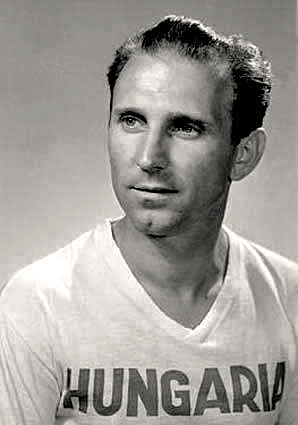
Nándor Hidegkuti (photo: mlsz.hu)
In his autobiography entitled Óbudától Firenzéig [From Óbuda to Florence], published in 1961, he revived his childhood memories with the following words:
“The grund. It was located around the Újlak brick factory, geographically somewhere between Föld Street and Zápor Street. For us, towards the end of the twenties, it was a real fairy world, an overwhelming joy to play ball in the grund, a small round ball kneaded and professionally knitted from rags, used or less used materials from home… ”.
The younger teenager taller than his contemporaries was playing as a goalkeeper back then on the grund. From the age of twelve, in 1934, he was a certified footballer of the Óbuda team, Újlaki FC, where he soon found his real position and was counted on as a striker. In the years of World War II, he first strengthened the football team of the gasworks and then of the electric companies. In the hardships of the post-war period, he accepted the offer of the Herminamezei Athletic Club. During the year spent in the association in Zugló, the bonus was given to the players in potatoes, beans and sugar.
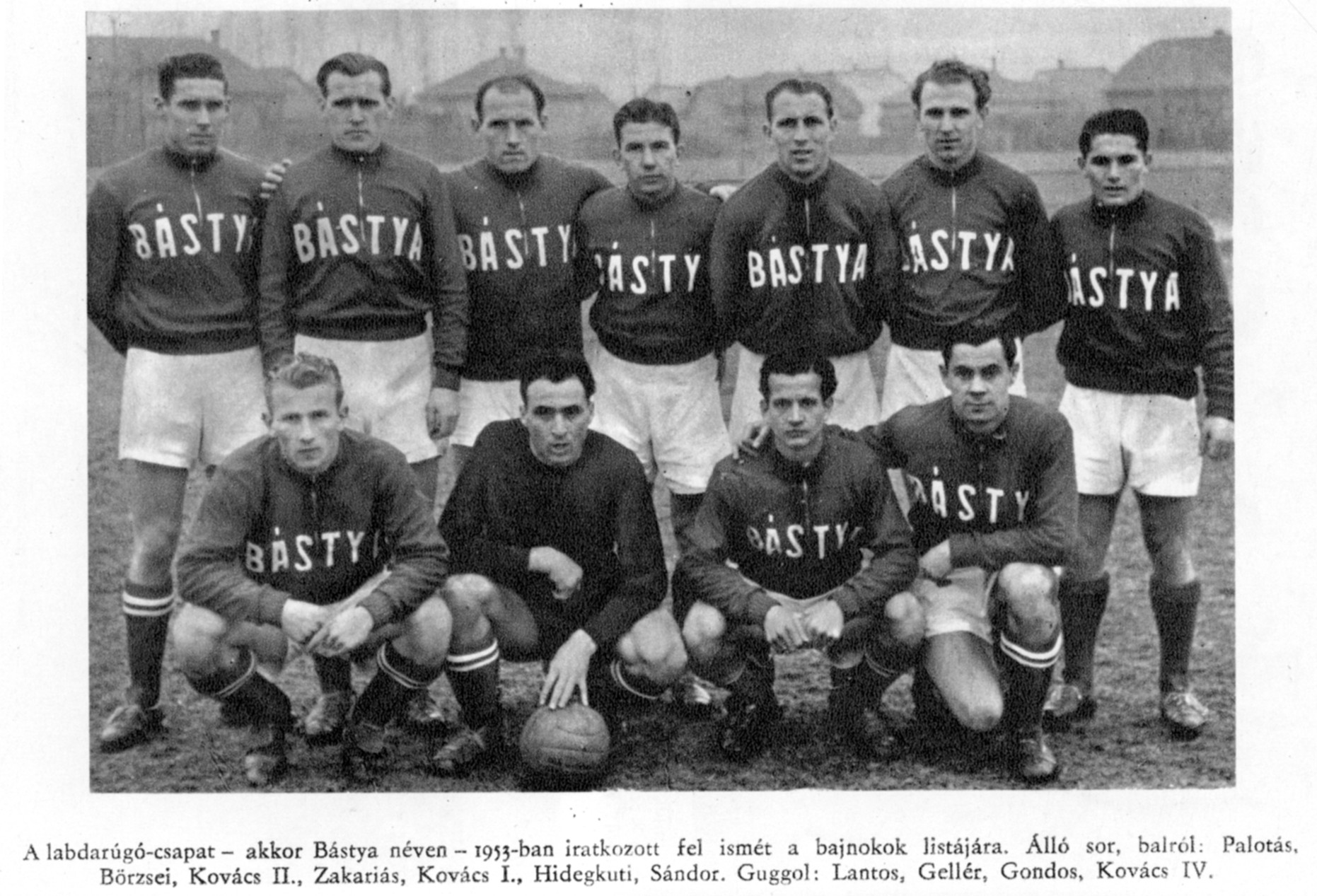
The team of MTK, then running as Bástya in 1953 (source: mtkbudapest.hu)
In 1946, Hidegkuti became a footballer of the Magyar Testgyakorlók Köre (MTK). Due to political pressure, the name of MTK and the color of the team changed several times in the 1950s it was called Textiles, Budapesti Bástya, Budapesti Vörös Lobogó, and it was only after the 1956 revolution that it was able to regain the name of Magyar Testgyakorlók Köre. Between 1946 and 1958, Nándor Hidegkuti played in the blue-and-white team in 302 matches and scored 222 goals. He won the Hungarian championship gold medal with the team three times, second place six times, and third place once.
The midfielder with exceptional abilities was one of the best players in Hungarian football. His versatility is characterized by the fact that he played in all of the forwards positions of the national team. "Nándi" of the national team created a school with his game and well-timed balls to start his attacking teammates. He was also nicknamed “Öreg" ["Old Man”] as the national eleven's oldest player. The technically and tactically perfect, hard-working, fast-paced and head-savvy footballer was mentioned among the best strikers in the world in his heyday.
Hidegkuti, Puskás and Kocsis (source: Magyar Labdarúgás [Hungarian Football])
The interesting thing about his player career is that he has reached the peak of his career beyond the age of thirty. It was then that it turned out that he was capable of the greatest and most useful performance in the field game. In addition to József Bozsik and Ferenc Puskás, he became one of the conductors of the national team. However, this task did not reduce the goal sensitivity of his game. In that role, he scored three goals in the 6: 3 match against England on 25 November 1953, the most outstanding game of his life. Between 1945 and 1958, Nándor Hidegkuti took part in almost 70 national team matches. As a member of the world-famous Gold Team, he won an Olympic gold medal in Helsinki in 1952 and a silver medal at the 1954 World Championships in Switzerland.
He has also achieved remarkable results as a coach. His first coaching job was to lead MTK’s second team between 1958 and 1959. A good year after the end of his player career, he became the head coach of his beloved team, MTK. The small bench of the blue-and-white association could be exchanged for the position of coach of a renowned Italian club, Fiorentia, with the restricting permission of the then political leadership. With his purple-white team, he achieved several successes in two years, becoming the winner of the KEK and Italian Cups.
After a successful period in Florence, he became the head coach of the Mantova team for a year. Returning to Hungary, he managed the ETO team in Győr. Under his leadership, the footballers of Győr became Hungarian champions for the first time. After two successful years at ETO, he was the head coach of Tatabánya, MTK, Spartacus in Budapest, Poland's Stal Rzeszów, Dózsa in Budapest and Egypt's al-Ahli. After working abroad for several years, he returned to Hungary permanently in 1980. Although he was called by several associations in his homeland, including MTK and ETO, he no longer took a job.
He received many awards during his life, and in 1994 he received the title of honorary citizen from the Local Government of Óbuda-Békásmegyer. He died on 14 February 2002, near his eightieth birthday. His grave is located in the honorary plot No. 24 of the Óbuda cemetery. The sculptural decoration of his tomb was made by the Kossuth Prize-winning sculptor Gábor Mihályi.
His tomb in the Óbuda Cemetery (Photo: Máté Millisits / pestbuda.hu)
The stadium of the Magyar Testgyakorlók Köre Hungária Football Club on Hungária Boulevard was named after him in 2002, where in 2013 a Hidegkuti bust created by the sculptor Péter Boros was placed in the fan base of the arena. The old Hidegkuti Stadium was demolished in 2015 due to its poor technical condition, and the new Hidegkuti Nándor Stadium was inaugurated on 13 October 2016. The work of Péter Boros was placed in the VIP hall of the new stadium.
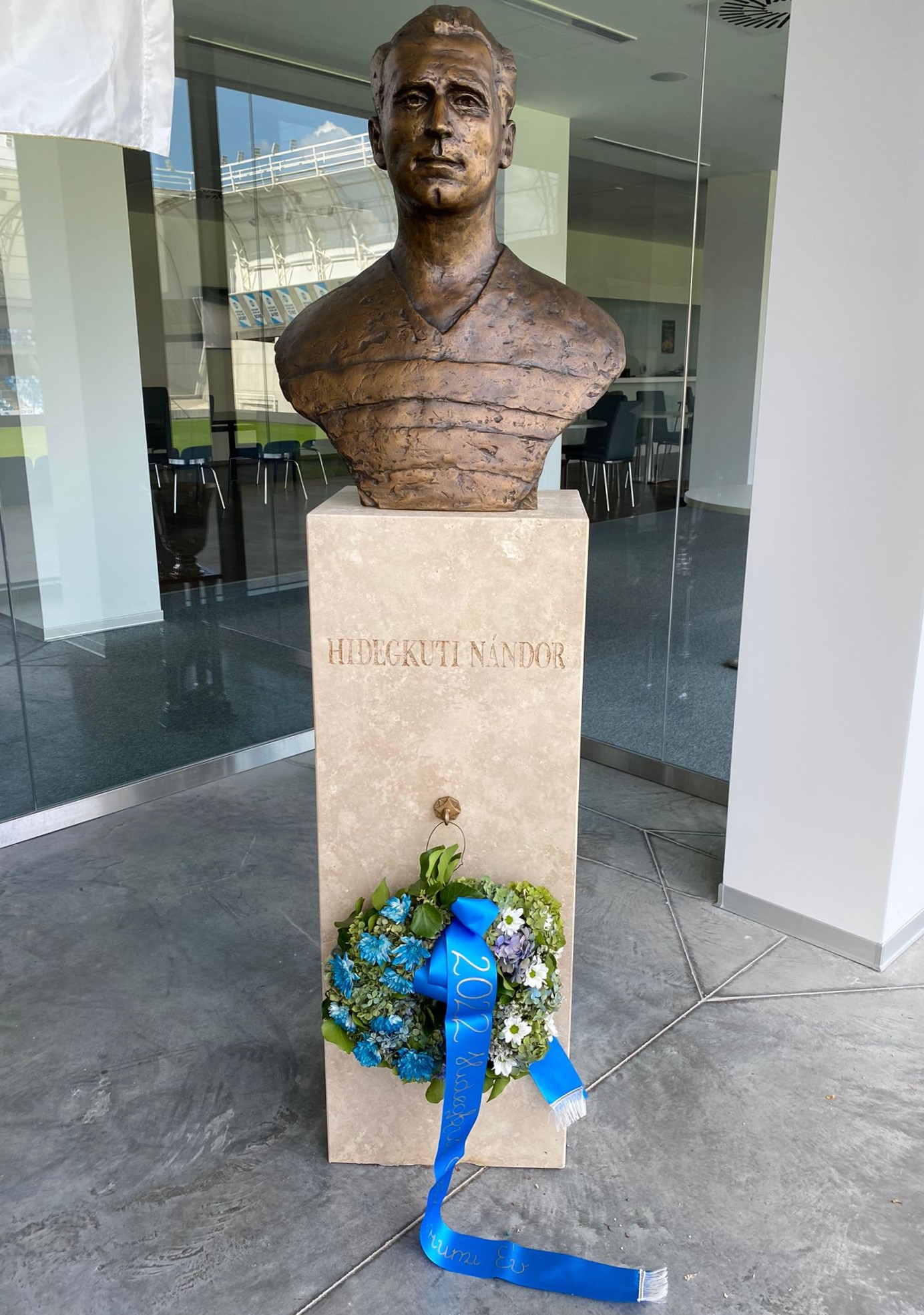
Hidegkuti bust in the new Hidegkuti Nándor Stadium (photo: mtkbudapest.hu)
Every year, on 14 February, the MTK Baráti Kör [Friends' Circle], the Herminamező Polgári Köre 1990[Civic Circle], the Budapesti Városvédő Egyesület Sporttörténeti Csoportja [Sports History Group of the Budapest City Protection Association] organize a wreath-laying at the grave of Nándor Hidegkuti.
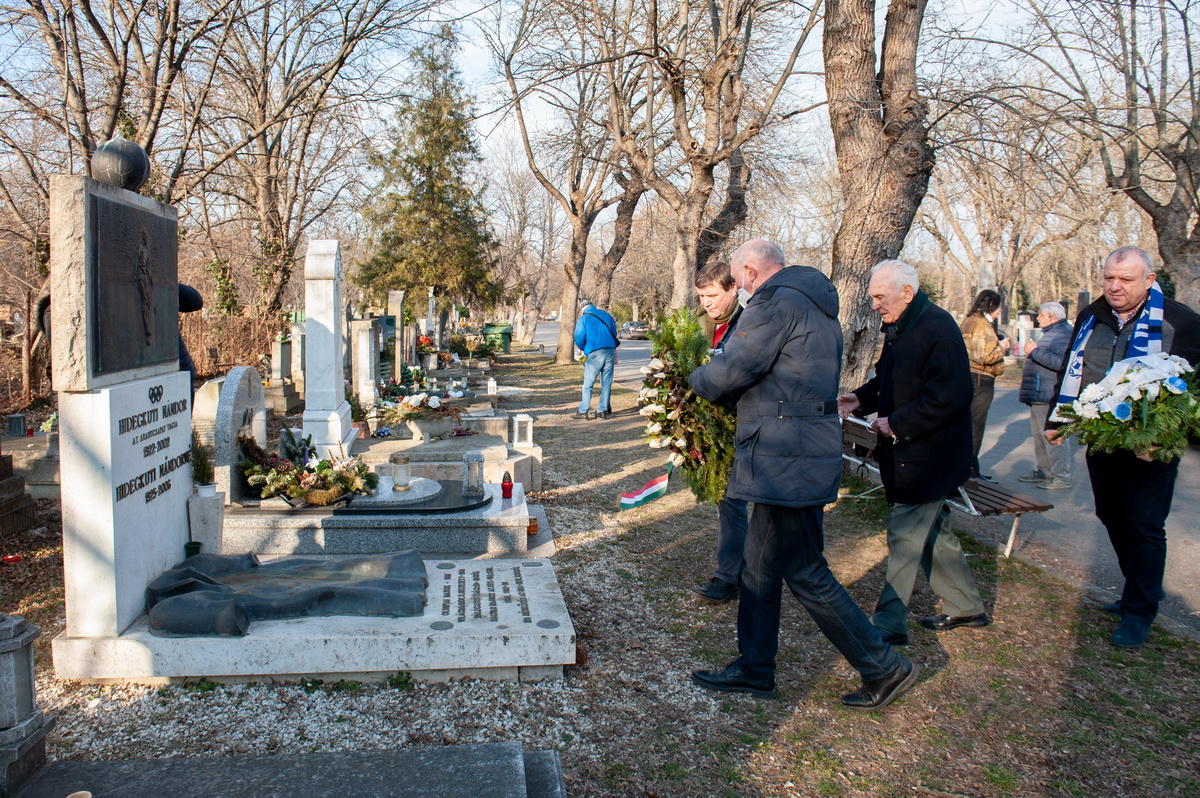
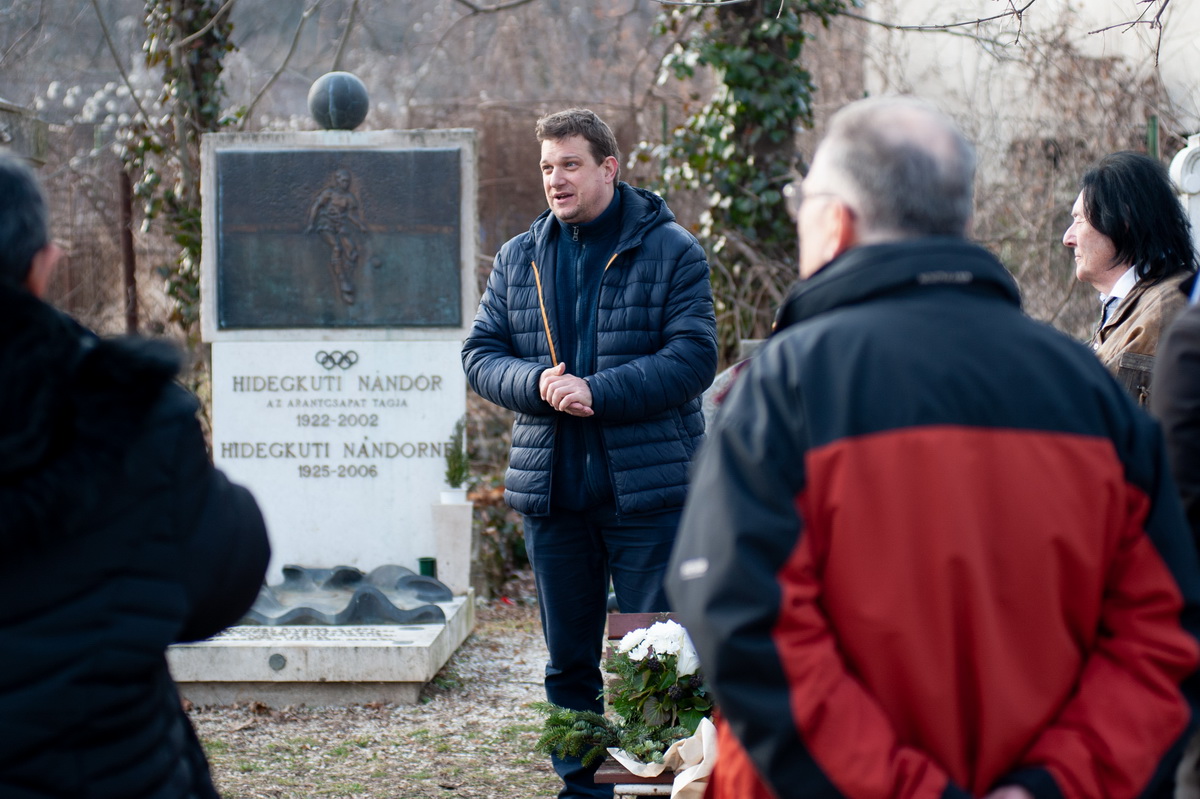
Commemoration of Nándor Hidegkuti on 14 February 2022, wreath-laying at his grave (photo: Zuglói Lapok / Róbert Balogh)
The commemoration of 2022 is the opening event of the Hidegkúti Centenary. The jubilee commemorative series includes the exhibition to be held in the dome hall of the Hungarian National Museum and the erection of a full-length Hidegkuti statue to be inaugurated in the area in front of the New Hidegkuti Nándor Stadium.
Cover photo: Bust of Hidegkuti in the new Hidegkuti Nándor Stadium (photo: mtkbudapest.hu)

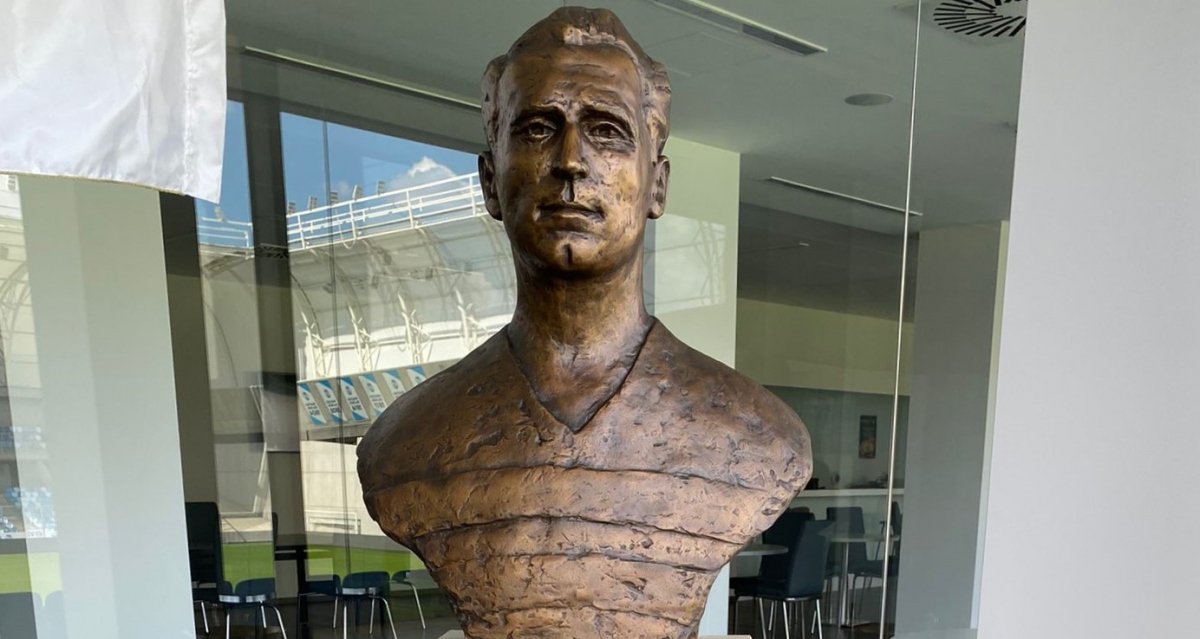


































Hozzászólások
Log in or register to comment!
Login Registration